STL249: MDF on a jointer?
Bob Van Dyke joins Mike and Ben to discuss story sticks, cooling glue to get more open time, and spring joints. And he admits to milling MDF on his machines!
Question 1:
From Bob:
I’ve been watching some of the older podcasts and #35 discussed story sticks. I was wondering when you make them. Do you make a story stick up from the drawing before you start the project, or do you make them up as you go through it? In other words the 1st leg you cut, mark out the story stick, then cut all of them. Then make a front apron, mark the stick, then cut the second apron.
Preserving The Drawings of Philip C. Lowe – GoFundMe
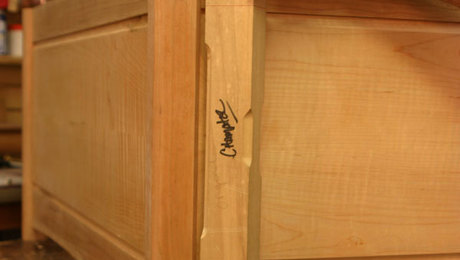 |
Story Stick for Accurate, Repeatable Cuts |
Question 2:
From Luca:
I listened to the podcast with Mike Mascelli where he mentions that warming up varnish before applying it would be a way to work around the problem of having a cold shop environment in the wintertime. This got me thinking that I could probably cool down white or yellow glue to extend the open time during summer when it’s hot in the shop. What are your thoughts?
 |
STL223: Mike Mascelli knows more about finishing than you do |
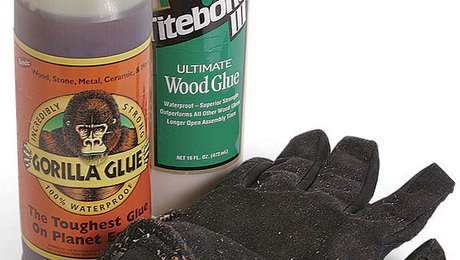 |
Which Glues Work in Cold Temperatures? |
Segments:
Bob: All time favorite technique – using a wedge in the back of a door pocket to keep an out of square drawer flush.
Mike: Smooth move – Accidentally cutting a students tenon off instead of just trimming the shoulder
Ben: Favorite technique – Holding drawer fronts in place with hot melt glue just long enough to get the pulls screwed on.
 |
Uses for Hot-Melt Glue |
Question 3:
From Tom:
I am building a dining table that has a 4′ x 7′ x 1 1/8″ top. It is composed of 6 boards with the two outer pieces being live edge. I have routed a groove for a spline, mostly to help alignment. I have made the spring joint with a #8C Stanley hand plane. 7′ is bigger than my 6″ jointer or I can handle and the #8 is the only plane that would cut both pieces at the same time. When the top is dry fitted loosely, there is a gap in the middle of each joint of a little more than 1/32″ as measured by feeler gage with ends nice and tight. I have read just about every spring joint article in FWW, mostly by Gary Rogowski and Bob Van Dyke, that I could find after multiple searches. Rogowski comes closest in his Nov/Dec 2003 article, but…
I am having trouble getting the one center clamp to close all the gaps when dry fitting. I have checked the dados and grooves for enough clearance. I can make joints close nicely when clamped one joint or two at a time. I really doubt that I can do 5 joints in one glue up and will probably do it in three or two.
I am afraid that when I do multiple glue ups, the last joint will not close no matter how much force I put on it. And I do not want to crush the live edge.
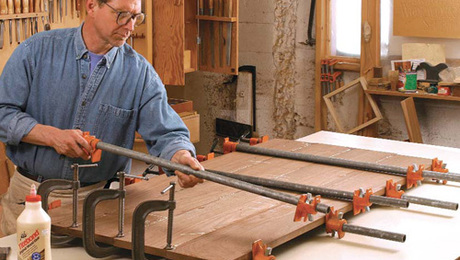 |
Spring joints: An edge glue-up’s best friend |
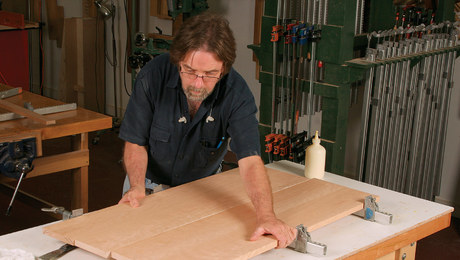 |
Video: Creating a spring joint with a handplane |
Question 4:
From Dean:
When flattening or edge straightening a board on a jointer is it better to take a moderate 0.046 to 0.093″ or perhaps greater cut (3/64 to 3/32 for the non-machinists) or multiple thin 0.010 to 0.015” passes?
This critical element is not addressed in videos, articles, or blogs that I have discovered.
Every two weeks, a team of Fine Woodworking staffers answers questions from readers on Shop Talk Live, Fine Woodworking‘s biweekly podcast. Send your woodworking questions to [email protected] for consideration in the regular broadcast! Our continued existence relies upon listener support. So if you enjoy the show, be sure to leave us a five-star rating and maybe even a nice comment on our iTunes page.
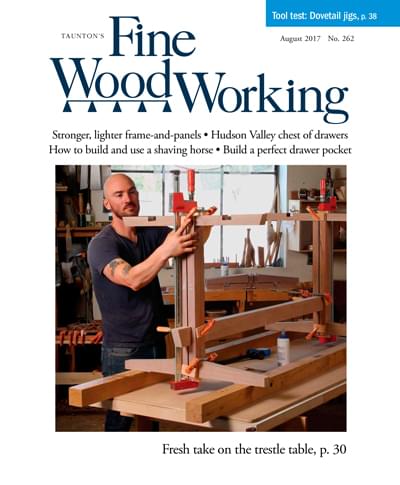

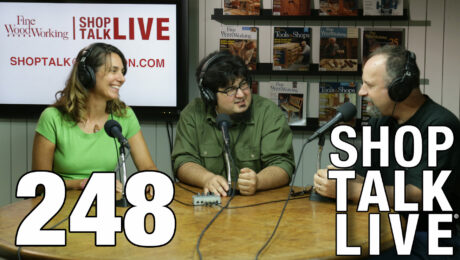
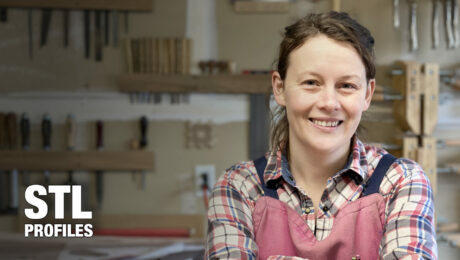
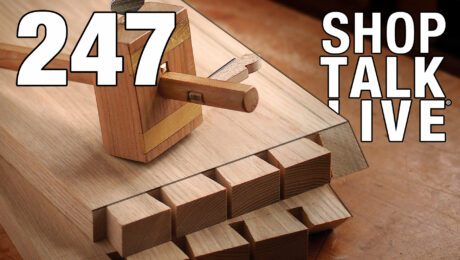






















Comments
You guys did good job of dewcribing how you use a story stick, but I don't think you answered the question. Do you make the story stick from measurements on the drawing, or do you make the 1st leg for instance and mark the stick from that? By the way I'm not the same Bob, but it is something I've wondered about.
Bob
Maybe we blew by that answer a bit. I guess it wasn't explicitly said, but I think their point was "it depends and it happens at many different times".
I learned to use story sticks early in my career when drafting on paper was the norm. They were/are invaluable for the the simplest to most complex jobs.
Normally you make it from the drawing. You are laying out full size so this will highlight and allow working out any errors in the design. It also allows for the laying out of any joinery on the same stick such as rabbits, dados tenons etc. Using different line types or colors.
The cutlist can then be taken directly from the stick. It eliminates calculations and repetitive measurements.
The sticks, once properly laid out can be used to directly transfer lines to the workpiece. For example say laying out drawer dividers for several drawers. The stick is lined up with the carcass sides and the lines transferred directly, no measuring required eliminating mistakes as well tiny culminative errors.
Hope this helps
Rob
I don't know if this means you guys are doing a great job or a not great job but when I listen to the Shop Talk video I am always nodding my head or shaking my head "no" or talking back to the screen and laughing out loud. It would be great to be sitting at the table and just shooting the breeze about woodworking, something I and most woodworkers can do for hours. Good on ya!
I'm taking that as a compliment! Score!
Bob Van Dyke mentioned some little plastic inserts to help get applied drawer fronts centered in cabinetry. Anyone have a name or a link for them?
They are made by Blum, a European hardware company and are available from CabinetParts.com. They are called Drawer Front Adjusters and cost 41 cents each. I have used them for years even on finer furniture.
Log in or create an account to post a comment.
Sign up Log in